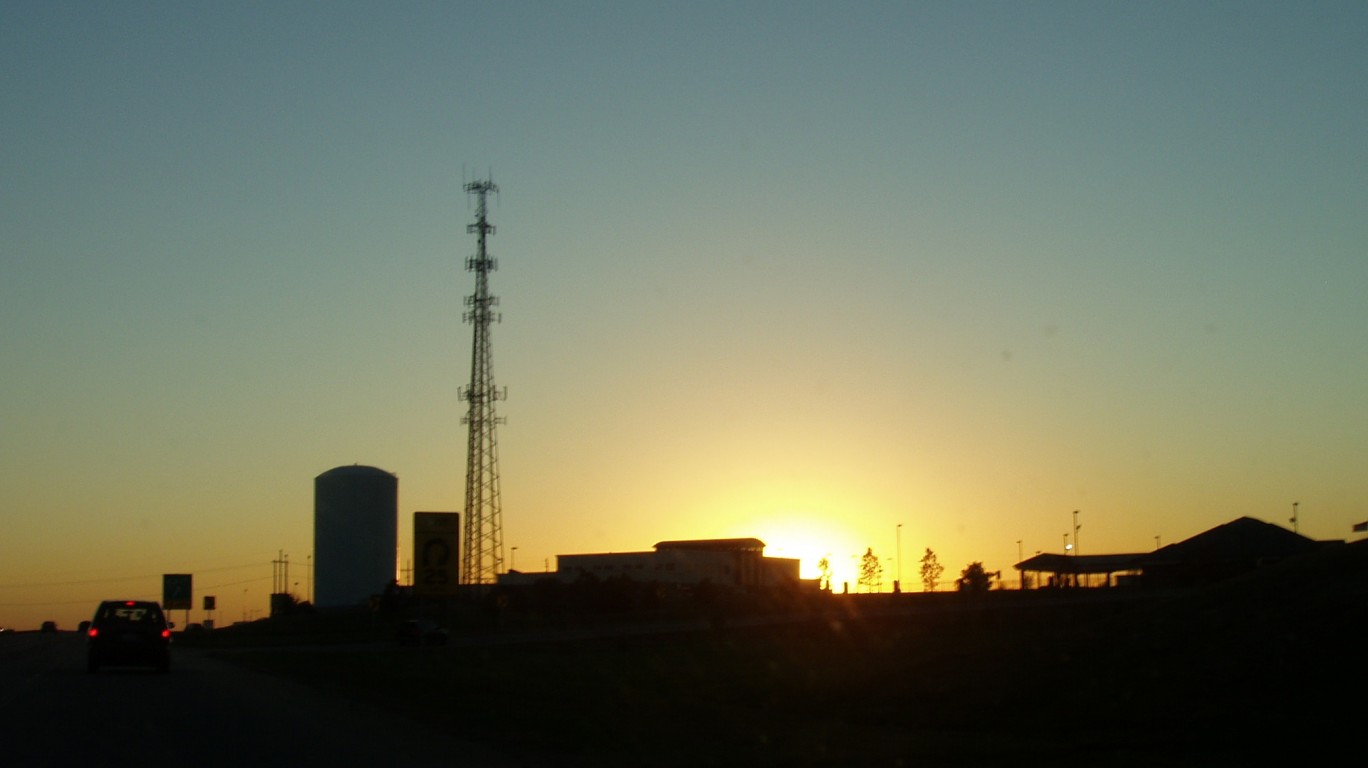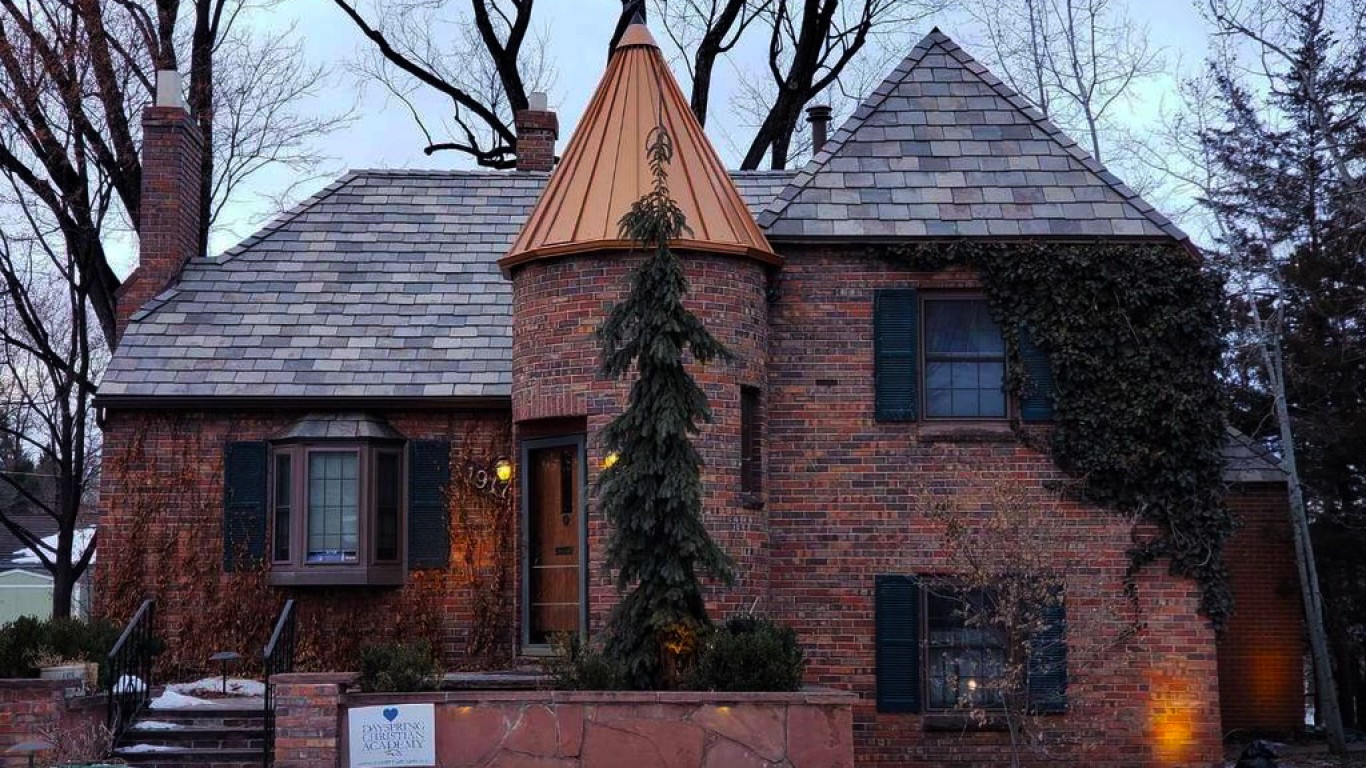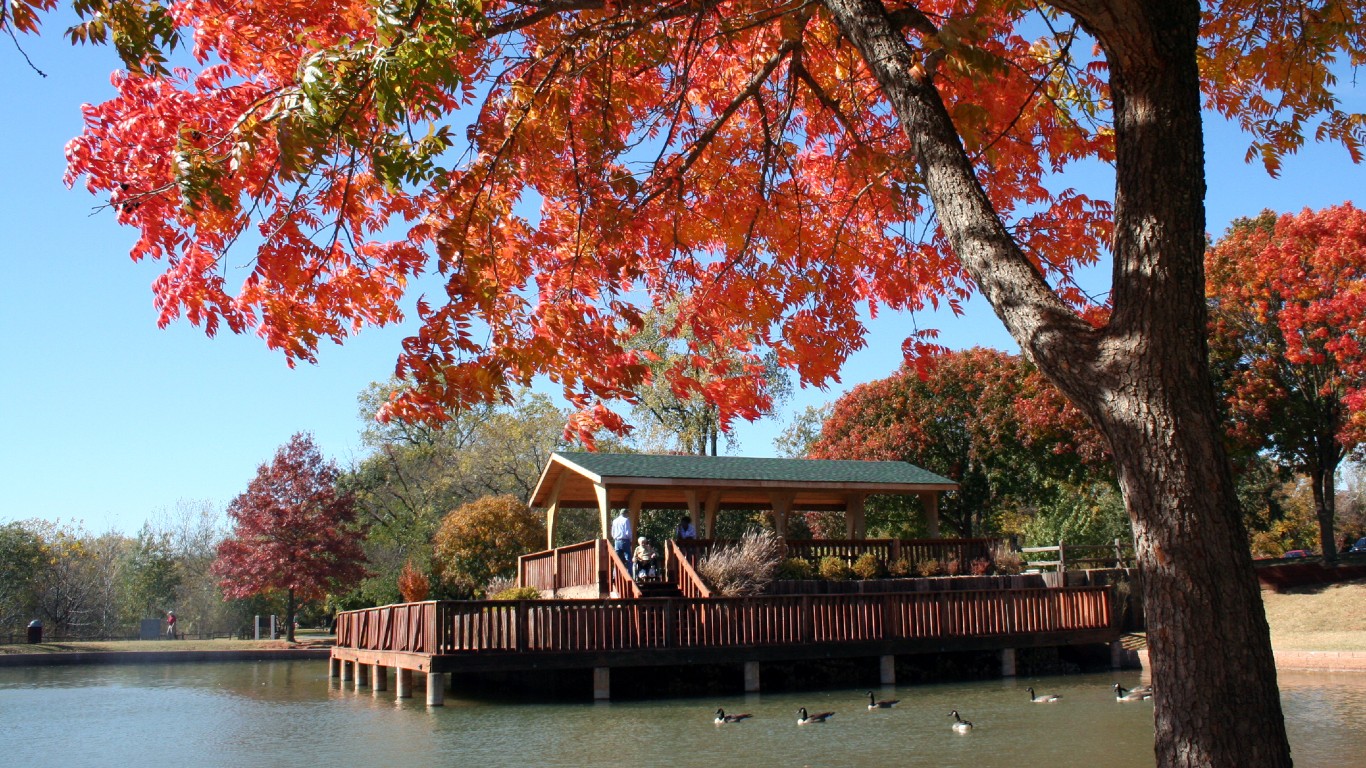
Home prices have surged in the U.S. in recent years. Driven by rising demand and supply constraints during the pandemic, the median home sale price spiked by nearly 50% from the second quarter of 2020 to Q3 in 2022. While the sale price of a typical American home has fallen in recent months since, housing prices remain at historic highs.
Not only have home values soared, but borrowing costs for home buyers have also climbed. The average interest rate on a 30-year fixed mortgage has been above 6% since September 2022, a high not seen in nearly a decade and a half. In a market defined by high prices and high mortgage rates, homeownership has become prohibitively expensive for a large number of Americans.
Still, housing prices are also subject to a number of factors that can be isolated from broader, nationwide market trends — and location is one of them. Two homes that are virtually identical can vary in price by hundreds of thousands of dollars, depending on where they are. And for prospective homeowners on a budget, some Oklahoma cities are far more affordable than others.
According to five-year estimates from the U.S. Census Bureau’s 2022 American Community Survey, the typical home in Oklahoma is worth $170,500. But across the 16 cities, towns and unincorporated communities in the state with populations of at least 25,000, median home values range from about $118,000 to over $300,000.
In any local market, home prices are often a reflection of what residents can afford. In Oklahoma, many of the least expensive cities for homebuyers are not high-income areas. Of the 16 places in Oklahoma with available data from the ACS, seven have a median home value that is less than the statewide median. In all but one of these places, the typical household earns less than the statewide median household income of $61,364. Similarly, most of Oklahoma’s more expensive housing markets have higher earning populations.
Why It Matters
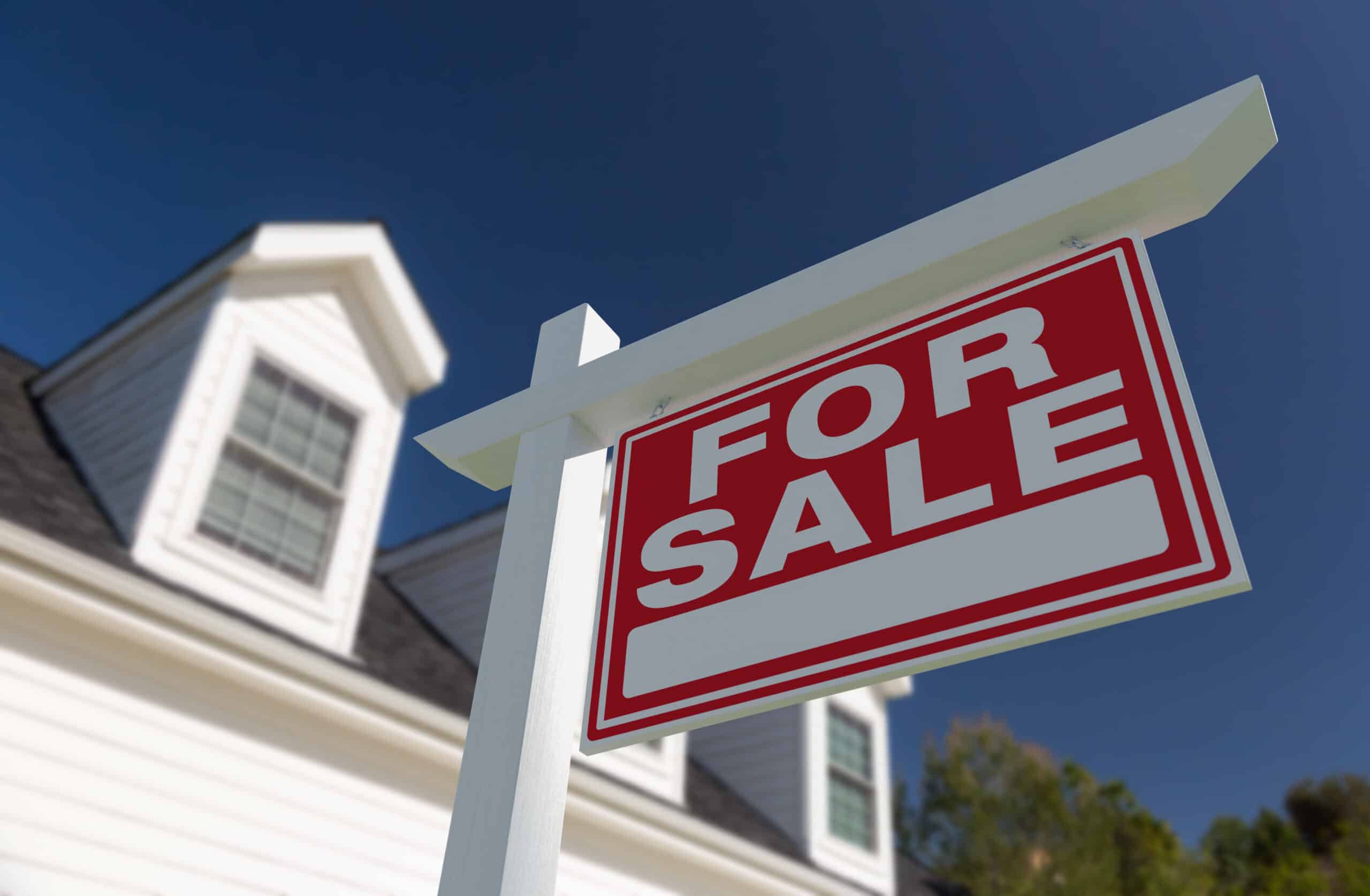
Homeownership is one of the most practical ways to build wealth in the United States, and rising borrowing costs and home values are pricing out a growing share of the population. The state of the U.S. housing market also has broader economic implications. According to the Congressional Research Service, spending associated with homeownership totaled $1.1 trillion in 2021, or nearly 5% of U.S. gross domestic product.
These are the cheapest and most expensive housing markets in Oklahoma.
16. Muskogee

- Median home value: $118,300
- Homes worth over $1 million: 0.1%
- Homeownership rate: 55.8%
- Median household income: $46,825
- Total population: 36,933
15. Lawton
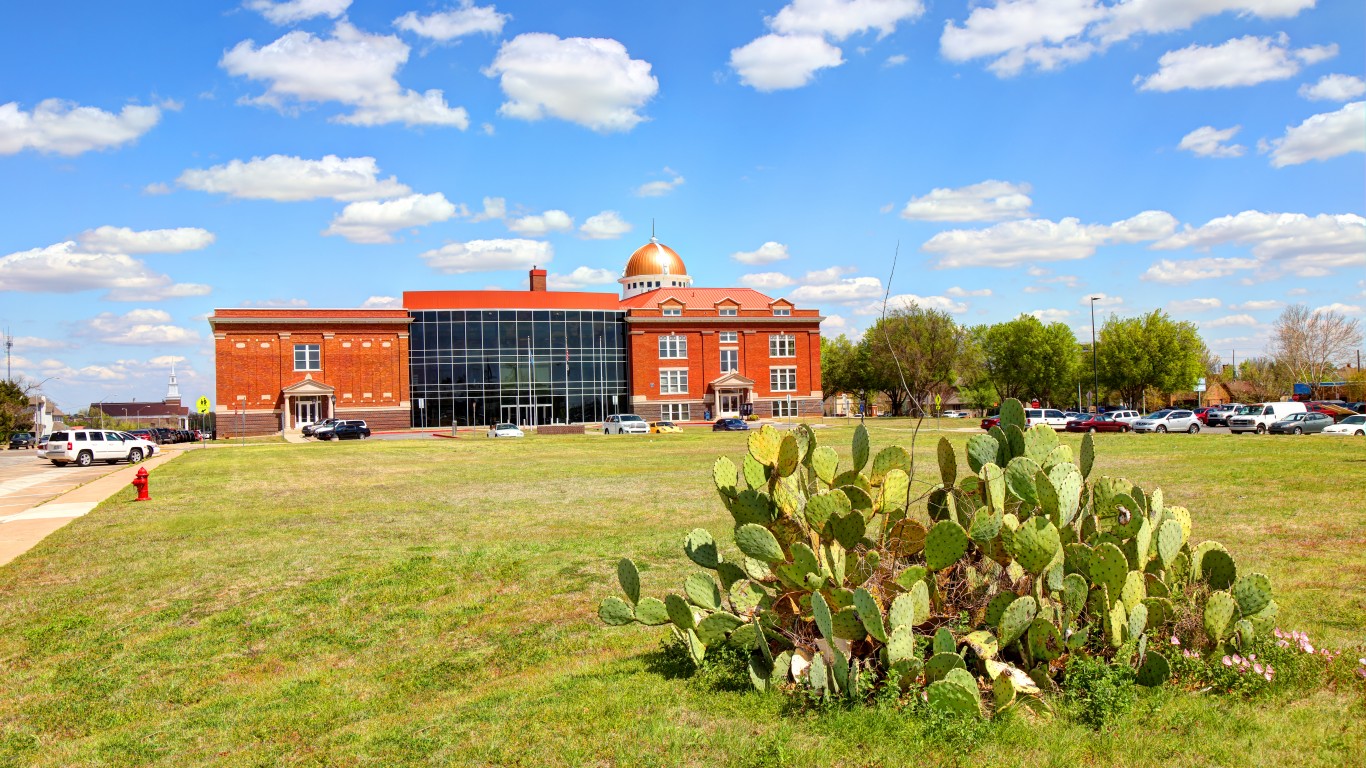
- Median home value: $125,500
- Homes worth over $1 million: 1.0%
- Homeownership rate: 44.7%
- Median household income: $51,561
- Total population: 91,023
14. Enid
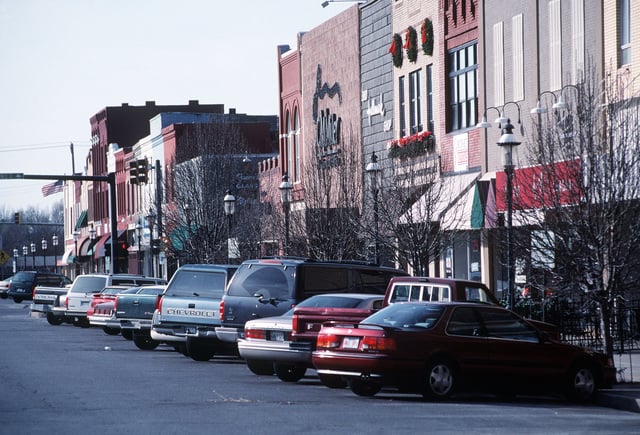
- Median home value: $136,500
- Homes worth over $1 million: 0.3%
- Homeownership rate: 60.8%
- Median household income: $60,790
- Total population: 50,961
13. Shawnee
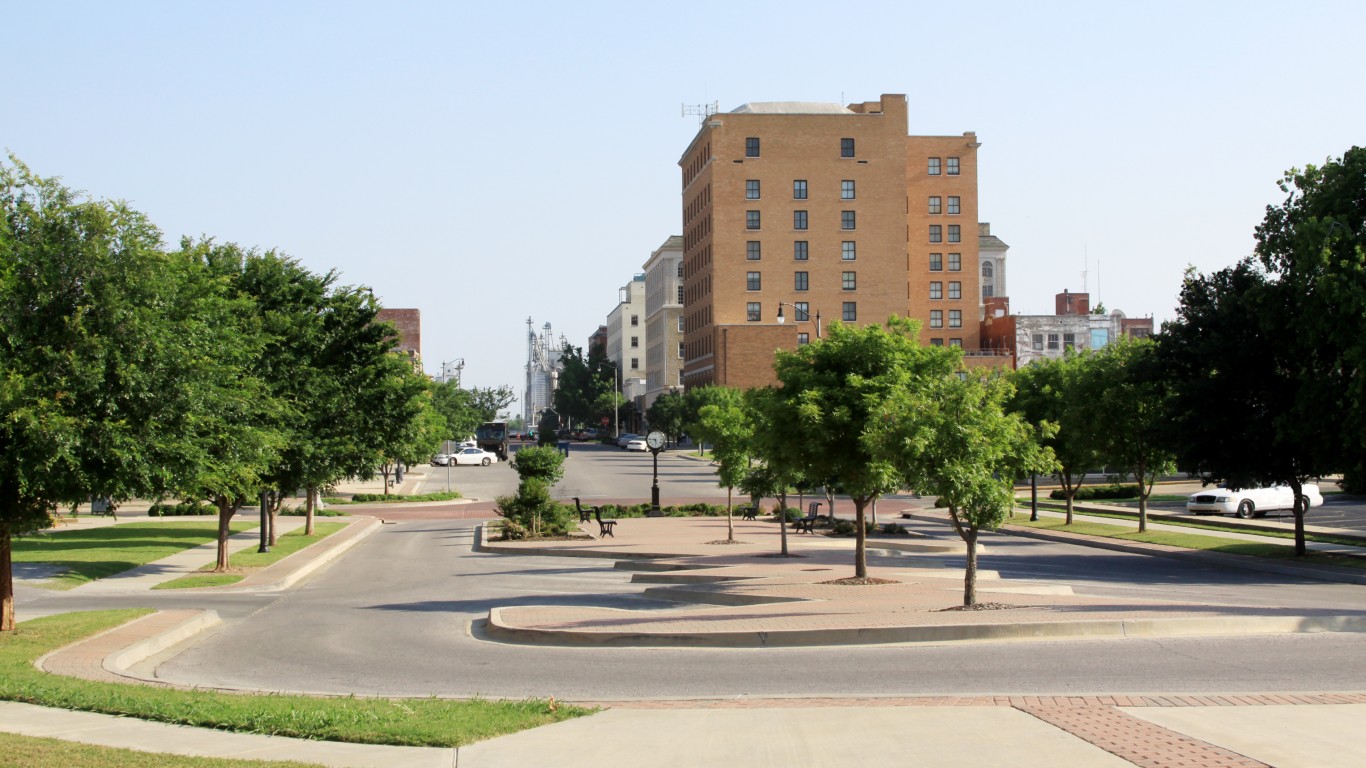
- Median home value: $141,300
- Homes worth over $1 million: 0.2%
- Homeownership rate: 56.2%
- Median household income: $50,695
- Total population: 31,391
12. Bartlesville
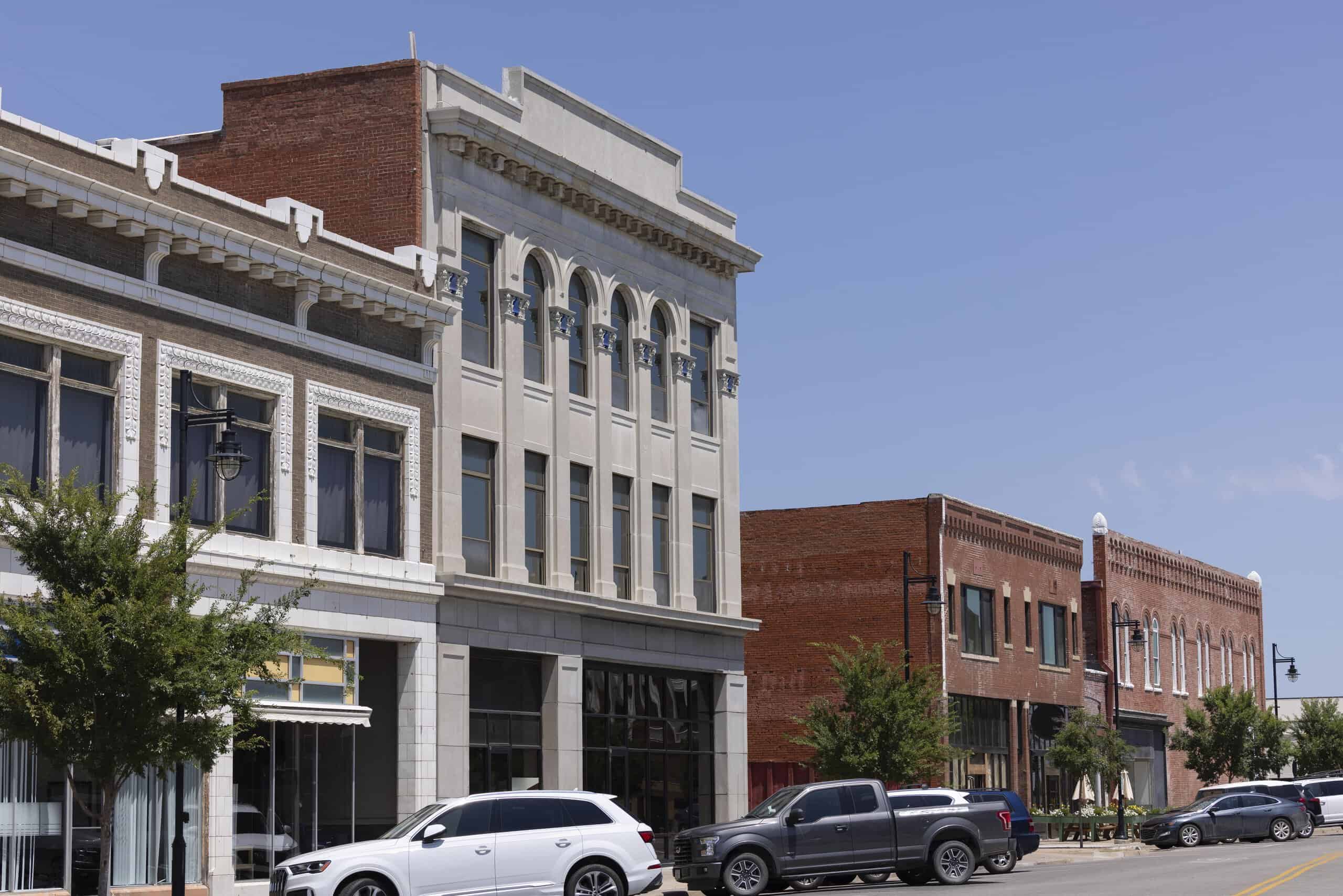
- Median home value: $146,700
- Homes worth over $1 million: 0.0%
- Homeownership rate: 69.6%
- Median household income: $58,230
- Total population: 37,314
11. Midwest City

- Median home value: $147,700
- Homes worth over $1 million: 0.5%
- Homeownership rate: 56.0%
- Median household income: $56,811
- Total population: 58,124
10. Moore

- Median home value: $170,300
- Homes worth over $1 million: 0.5%
- Homeownership rate: 70.0%
- Median household income: $73,285
- Total population: 62,685
9. Tulsa
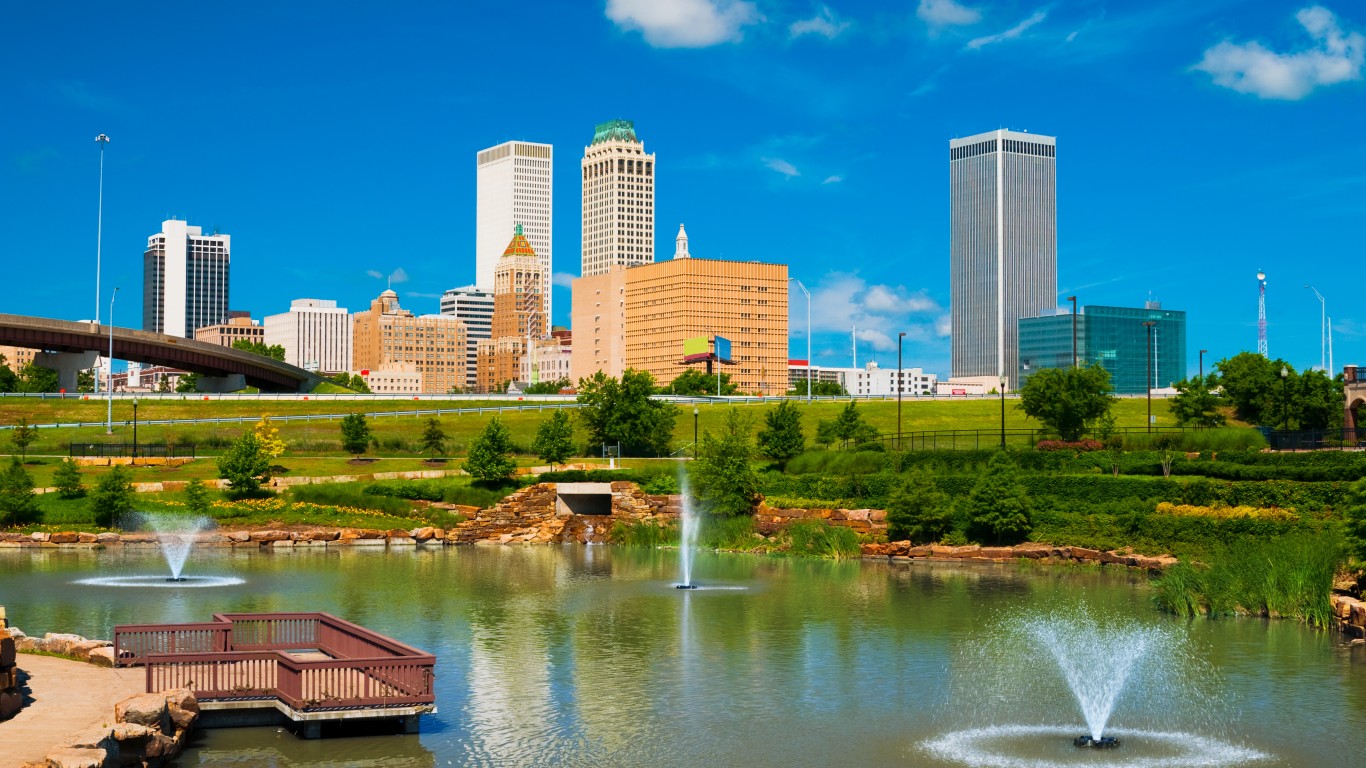
- Median home value: $174,200
- Homes worth over $1 million: 2.1%
- Homeownership rate: 52.3%
- Median household income: $56,648
- Total population: 411,938
8. Oklahoma City
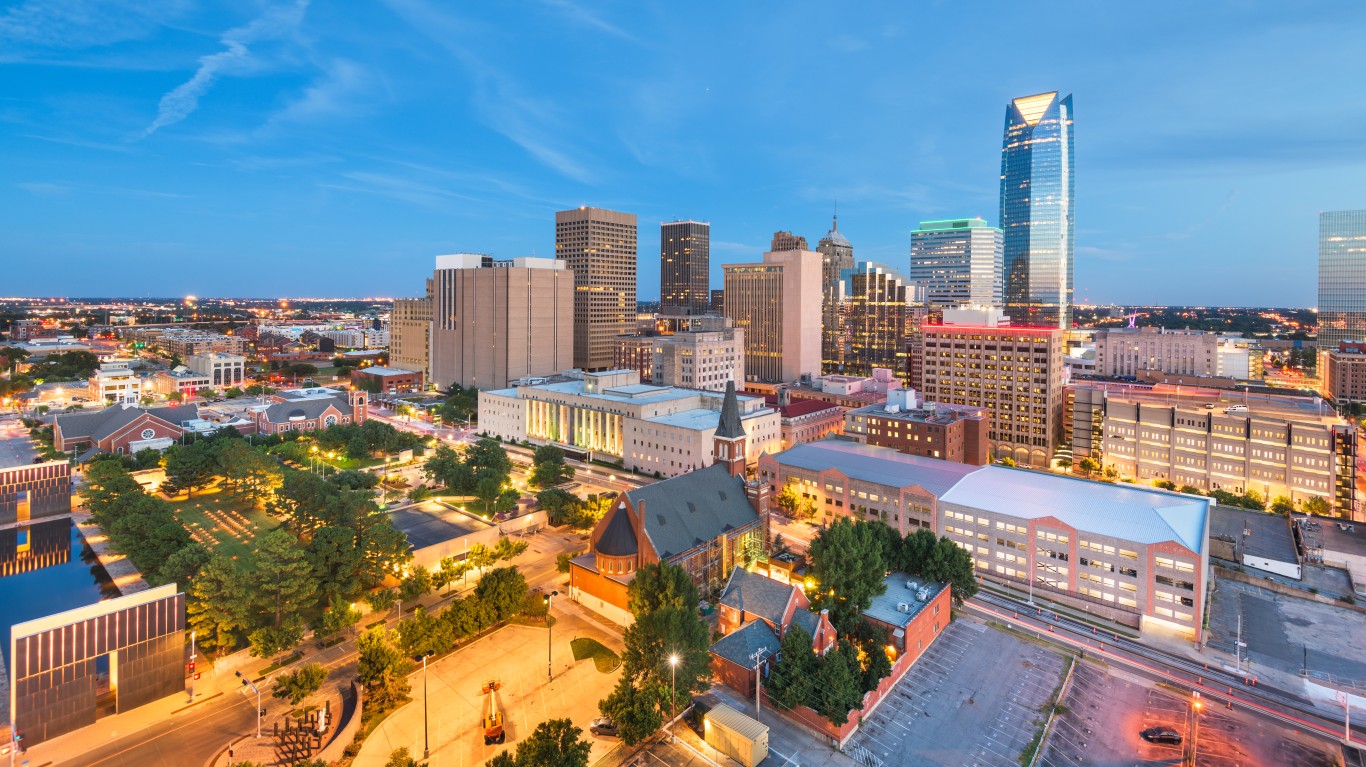
- Median home value: $196,700
- Homes worth over $1 million: 1.4%
- Homeownership rate: 59.5%
- Median household income: $64,251
- Total population: 681,088
7. Broken Arrow
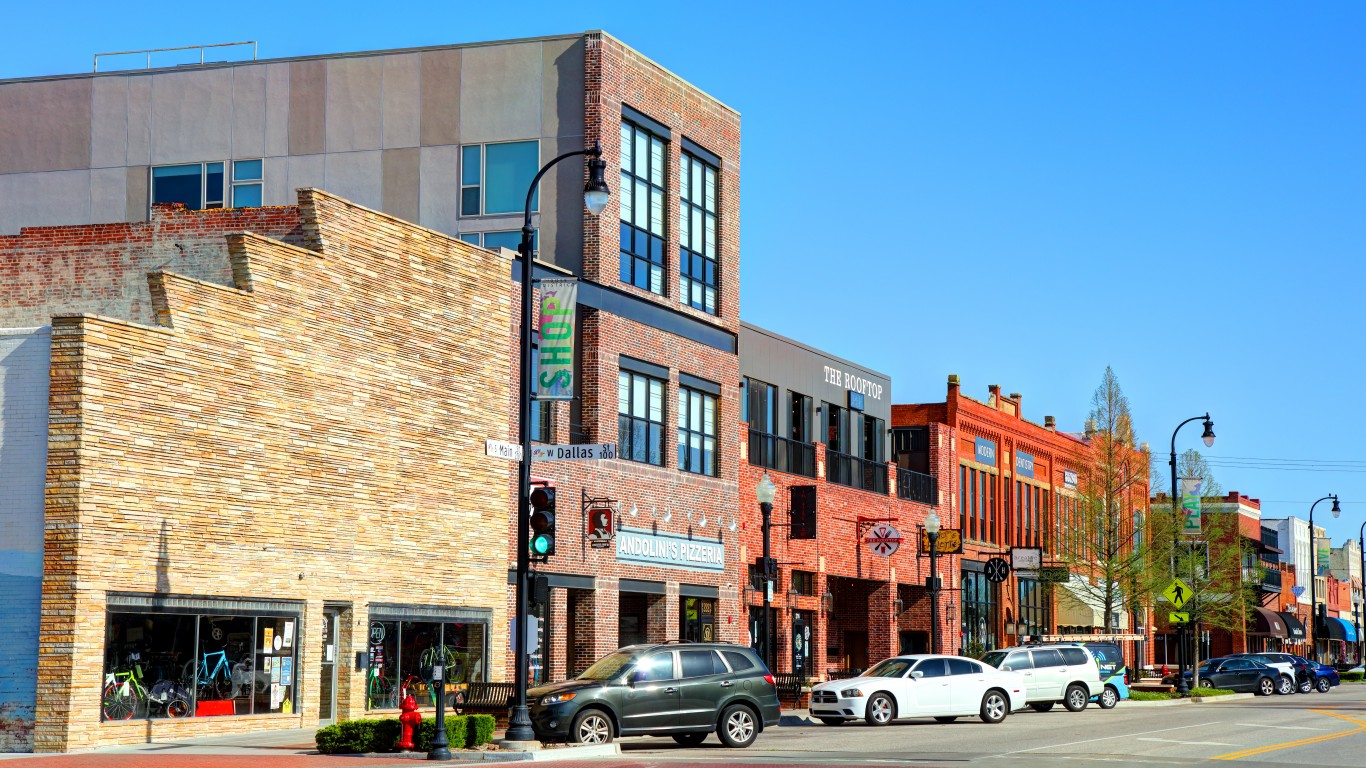
- Median home value: $210,800
- Homes worth over $1 million: 0.7%
- Homeownership rate: 72.5%
- Median household income: $82,547
- Total population: 114,237
6. Stillwater
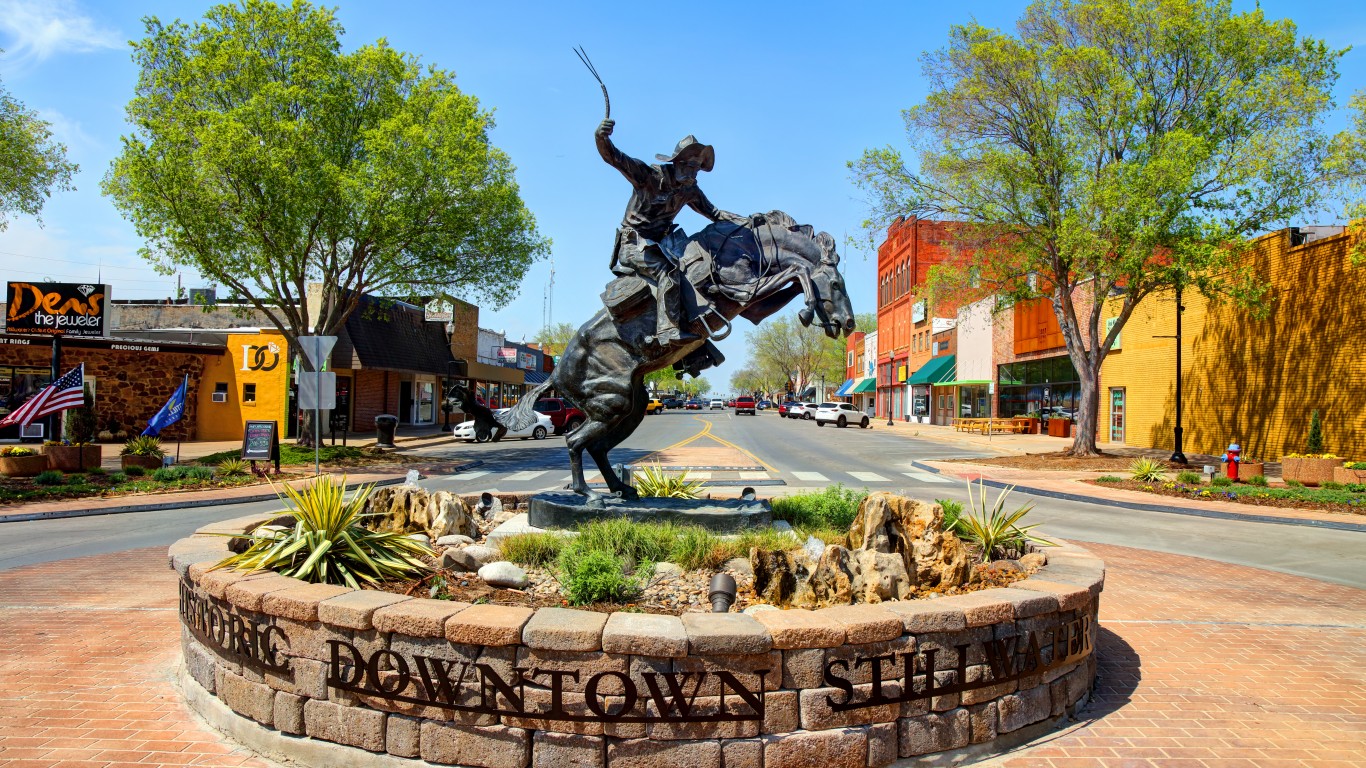
- Median home value: $213,100
- Homes worth over $1 million: 1.2%
- Homeownership rate: 37.4%
- Median household income: $39,998
- Total population: 48,644
5. Owasso
- Median home value: $218,400
- Homes worth over $1 million: 0.8%
- Homeownership rate: 64.5%
- Median household income: $79,183
- Total population: 38,134
4. Norman
- Median home value: $224,900
- Homes worth over $1 million: 0.9%
- Homeownership rate: 52.4%
- Median household income: $62,849
- Total population: 127,701
3. Jenks
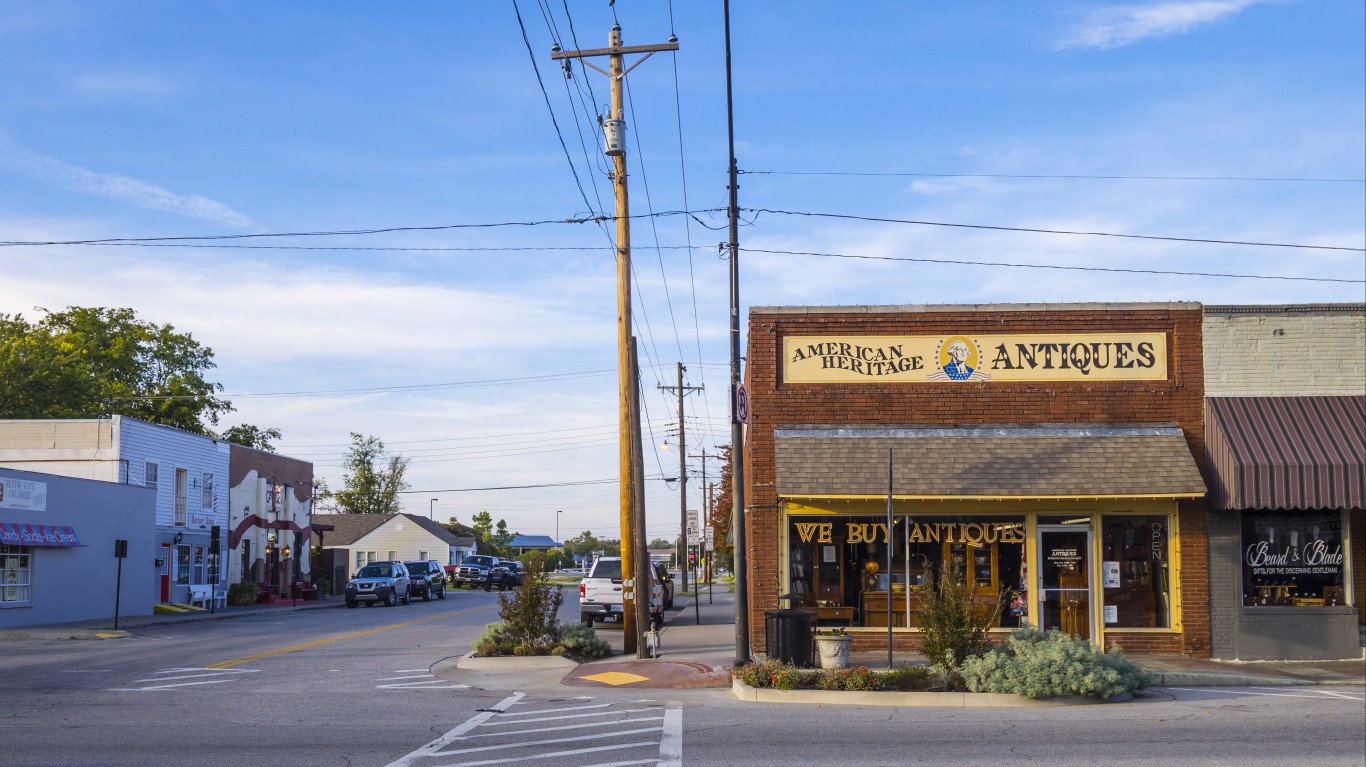
- Median home value: $265,400
- Homes worth over $1 million: 2.2%
- Homeownership rate: 78.6%
- Median household income: $101,767
- Total population: 25,872
2. Bixby
- Median home value: $278,500
- Homes worth over $1 million: 0.8%
- Homeownership rate: 76.0%
- Median household income: $93,765
- Total population: 28,731
1. Edmond
- Median home value: $304,700
- Homes worth over $1 million: 3.6%
- Homeownership rate: 70.3%
- Median household income: $96,389
- Total population: 94,503
| Rank | Places in Oklahoma with at least 25,000 residents | Median home value ($) | Homeownership rate (%) | Median household income ($) | Total Population |
|---|---|---|---|---|---|
| 1 | Edmond | 304,700 | 70.3 | 96,389 | 94,503 |
| 2 | Bixby | 278,500 | 76.0 | 93,765 | 28,731 |
| 3 | Jenks | 265,400 | 78.6 | 101,767 | 25,872 |
| 4 | Norman | 224,900 | 52.4 | 62,849 | 127,701 |
| 5 | Owasso | 218,400 | 64.5 | 79,183 | 38,134 |
| 6 | Stillwater | 213,100 | 37.4 | 39,998 | 48,644 |
| 7 | Broken Arrow | 210,800 | 72.5 | 82,547 | 114,237 |
| 8 | Oklahoma City | 196,700 | 59.5 | 64,251 | 681,088 |
| 9 | Tulsa | 174,200 | 52.3 | 56,648 | 411,938 |
| 10 | Moore | 170,300 | 70.0 | 73,285 | 62,685 |
| 11 | Midwest City | 147,700 | 56.0 | 56,811 | 58,124 |
| 12 | Bartlesville | 146,700 | 69.6 | 58,230 | 37,314 |
| 13 | Shawnee | 141,300 | 56.2 | 50,695 | 31,391 |
| 14 | Enid | 136,500 | 60.8 | 60,790 | 50,961 |
| 15 | Lawton | 125,500 | 44.7 | 51,561 | 91,023 |
| 16 | Muskogee | 118,300 | 55.8 | 46,825 | 36,933 |
The Average American Is Losing Momentum On Their Savings Every Day (Sponsor)
If you’re like many Americans and keep your money ‘safe’ in a checking or savings account, think again. The average yield on a savings account is a paltry .4%1 today. Checking accounts are even worse.
But there is good news. To win qualified customers, some accounts are paying more than 7x the national average. That’s an incredible way to keep your money safe and earn more at the same time. Our top pick for high yield savings accounts includes other benefits as well. You can earn a $200 bonus and up to 7X the national average with qualifying deposits. Terms apply. Member, FDIC.
Click here to see how much more you could be earning on your savings today. It takes just a few minutes to open an account to make your money work for you.
Thank you for reading! Have some feedback for us?
Contact the 24/7 Wall St. editorial team.
